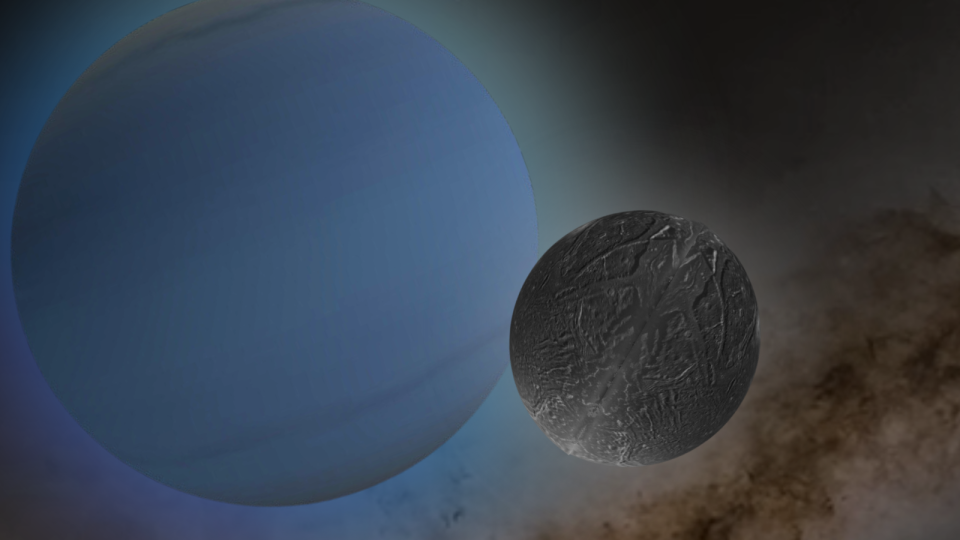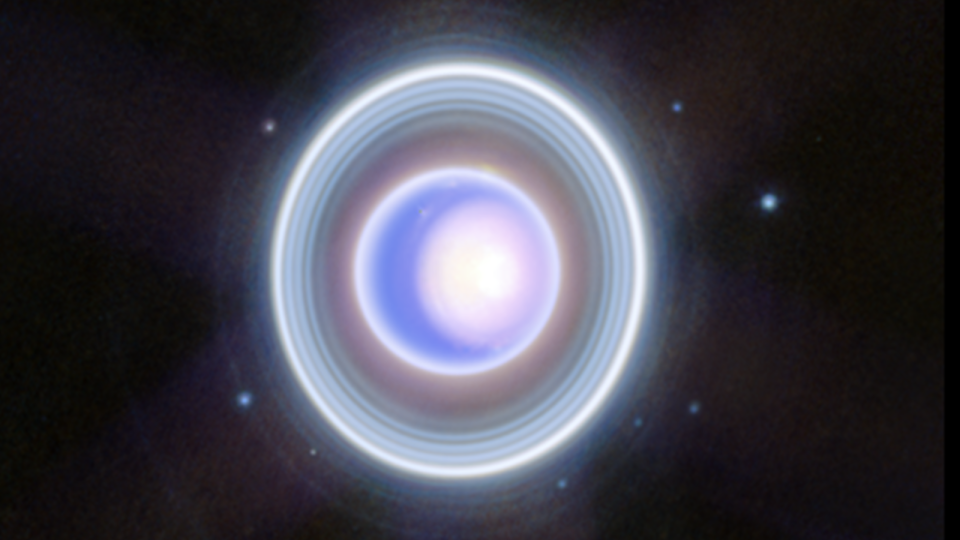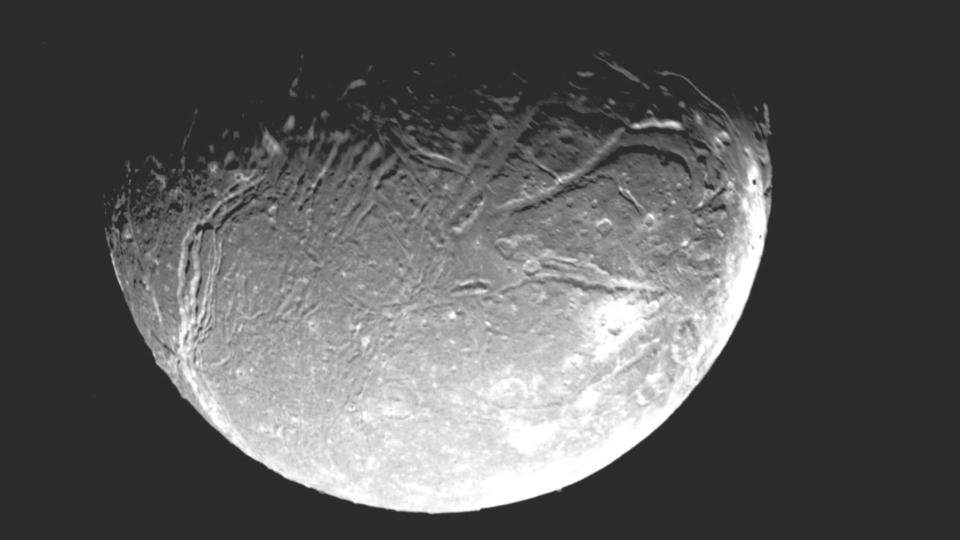When you buy through links in our articles, Future and its syndication partners may earn a commission.

Using the James Webb Space Telescope (JWST), astronomers have discovered that Ariel, a moon of Uranus, may be hiding in a buried ocean of liquid water.
The discovery could provide an answer to a mystery surrounding this Uranian moon that has baffled scientists: the fact that Ariel’s surface is covered in a significant amount of carbon dioxide ice. This is puzzling because at the distance of Uranus and its moons from the sun, 20 times farther from the sun than Earth, carbon dioxide turns into gas and is lost to space. This means that some process must be replenishing the carbon dioxide on Ariel’s surface.
Previous theories suggested that this happens due to interactions between Ariel’s surface and charged particles trapped in Uranus’ magnetosphere. These particles produce ionizing radiation, breaking apart molecules and leaving behind carbon dioxide, a process called “radiolysis.”
However, new evidence from the JWST suggests that the source of this carbon dioxide is not outside Ariel, but from within, possibly from a buried ocean beneath the surface.
Related: ‘Traffic jams’ around Uranus could solve mystery of faint radiation belts


Because chemical elements and molecules absorb and emit light at characteristic wavelengths, they leave individual “fingerprints” on spectra. The team behind this discovery used the JWST to collect spectra of light from Ariel, helping them piece together a picture of the chemical composition of the Uranian moon.
By comparing this to simulated spectra of a chemical mix made in the lab here on Earth, the team found that Ariel has one of the most carbon dioxide-rich deposits in the solar system. Not only did this add an extra 10 millimeters (0.4 inches) of thickness to the ice on the side of tidally locked Ariel that permanently faces away from Uranus, it also revealed clear deposits of carbon monoxide for the first time.
“It just shouldn’t be there. You have to go to 30 Kelvin [minus 405 degrees Fahrenheit] before the carbon monoxide is stable,” team leader Richard Cartwright of the Johns Hopkins Applied Physics Laboratory (APL) said in a statement. “The carbon monoxide would have to be actively replenished, that’s for sure.”
This is because Ariel’s surface temperature is on average about 18 degrees Celsius higher than this key temperature.
Cartwright acknowledges that radiolysis could explain some of this replenishment. However, observations from Voyager 2’s 1986 flyby of Uranus and its moons and other recent findings have suggested that the interactions behind radiolysis may be limited because Uranus’ magnetic field axis and the orbital plane of its moons are offset by about 58 degrees.
This means that most of the carbon/oxygen bonds on Ariel’s surface may have been created by chemical processes in a liquid water ocean trapped beneath Ariel’s ice.
Cool customer Ariel may have a volcanic temperament
After forming in Ariel’s percolating ocean, these carbon oxides could escape through cracks in the icy shell of Uranus’s moon or even be ejected explosively in powerful eruptive plumes.


Scientists have long suspected that Ariel’s cracked and battered surface could be the presence of active cryovolcanoes, volcanoes that eject plumes of icy snow instead of lava. These plumes could be so powerful that they launch material into Uranus’ magnetic field.
Most of the cracks and grooves seen on Ariel’s surface are on the side of the moon that faces away from Uranus. If carbon dioxide and carbon monoxide are leaking from these features onto the Uranian moon’s surface, this could explain why these compounds are found in greater abundance on this trailing side of the icy body.
The JWST also gathered more chemical evidence of a subsurface ocean of liquid water. Spectral analysis revealed the presence of carbonite minerals, salts that form when rocks meet and interact with liquid water.
“If our interpretation of that carbonate feature is correct, then that’s a pretty big result, because it means it had to form in the interior,” Cartwright explained. “That’s something we absolutely need to confirm, either through future observations, modeling, or a combination of techniques.”
Related Stories:
— In the search for extraterrestrial life, scientists are looking for Earth-Jupiter pairs outside the solar system
— Infrared aurora on Uranus confirmed for the first time
— James Webb Space Telescope discovers jet stream on Jupiter stronger than a Category 5 hurricane
Uranus and its moons have not been visited by a spacecraft since Voyager 2 nearly four decades ago, and this was not even the spacecraft’s primary mission. In 2023, the Planetary Science and Astrobiology decadal survey emphasized the need to prioritize a dedicated mission to the Uranian system.
Cartwright believes such a mission would provide an opportunity to gather valuable information about Uranus and Neptune, the solar system’s other ice giant. Such a mission could also provide important data about the other moons in these systems that may contain oceans. This information could then be applied to exoplanets, or “extrasolar planets,” outside the solar system.
“All of these new insights underscore how fascinating the Uranus system is,” said team member and NASA Applied Physics Laboratory scientist Ian Cohen. “Whether it’s unlocking the keys to how the solar system formed, better understanding the planet’s complex magnetosphere, or determining whether these moons are potential ocean worlds, many of us in the planetary science community are really looking forward to a future mission to explore Uranus.”
The team’s research was published Wednesday (July 24) in The Astrophysical Journal Letters.